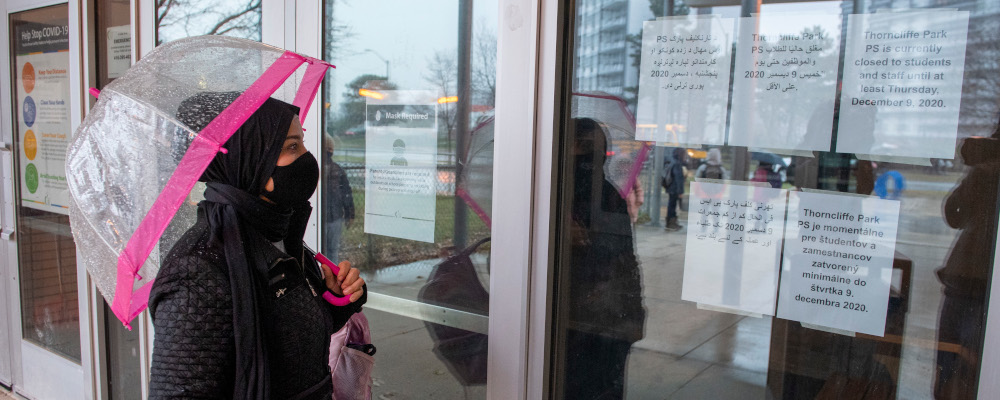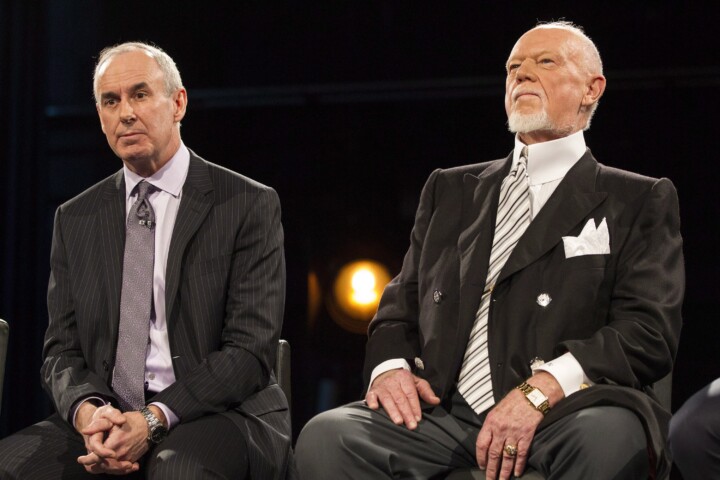Two and a half years into the pandemic, schools remain unsettled places and are now disrupted spaces. Half of 850 American public school leaders, surveyed in May 2022, reported an increase in classroom disruptions from student misconduct since schools returned to mostly in-person learning. One in three of the group of mostly principals testified to rising tensions and an uptick in student fights or physical attacks.
Higher levels of violence and disruption are complicating and impeding school initiatives aimed at rebuilding school communities and getting students back on academic track. While concerning student behaviour studies results are surfacing in the United States, Canadian K-12 education remains a “data desert” where evidence of turmoil still has to be pieced together from scattered school-level reports.
Horrific stories of high schools in crisis capture the news headlines. Regular fights, flagrant drug use, weapons offences, and terrified staff in one troubled Toronto high school, York Memorial, are hard to ignore. Since September 2022, fights happen nearly every day, sometimes multiple fights, and have produced more than 75 health and safety complaints, prompting 15 of the 80 staff to stage a one-day walkout in protest. Merging two rival inner-city schools has created a cauldron of tension and violence, but that’s a worst-case scenario.
More typical of the pandemic fallout is the Ontario city of London, where its elementary schools provide a barometer of what’s actually happening inside and outside of classrooms. Violent incidents in the Thames Valley District School Board’s 154 elementary schools more than doubled to 900 in October 2022, compared to some 400 in June of last year.
What’s most troubling is that many episodes of student-on-student violence go unreported and it’s really a sign of the turmoil that runs deeper in school culture. Whole classes are evacuated to isolate and subdue angry or frustrated students acting out in school. Elementary parents complain about rampant violence in younger grades and overwhelmed staff unable to curb the violence or provide support or protection for children.
The local teachers’ union and the odd brave teacher are speaking out of school. One Grade 8 teacher, identified only as “Tom,” blamed a board discipline policy that is not only “unclear and confusing,” but paves the way for students to re-offend. “There is zero accountability,” he told CBC News London Morning, hiding his identity out of fear of possible consequences.
Nor is it confined to elementary schools. For the past two years, a few London city high schools have been in near-constant turmoil. Local police reported making 28 calls to one London high school, Saunders Secondary School, from October 2021 to April 22 to break up fights, respond to mental health issues, or investigate assaults, property damage, thefts, and other incidents. Two 16-year-old boys were stabbed in September near A.B. Lucas Secondary School and more recently, in late November, students described a frantic and bloody scene at H.B. Beal SS after a teen girl stabbed another over lunchtime in the cafeteria.
School districts like Ontario’s TVDSB were unprepared for the rising incidence of violence and the near-constant problem of “low-level disruptions” besetting classrooms. The Ontario school board is typical of most of the 72 districts in the province. Faced with repeated incidents and intense media scrutiny, TVDSB Director of Education Mark Fisher has declined comment or instructed senior school officials to either defend existing ‘’progressive discipline” policy or assign blame to “what’s happening in communities” following the pandemic.

After having implemented school-wide positive, preventive student behaviour policies over the past fifteen years or so, school principals and classroom teachers have been deprived of traditional deterrents—office reports, suspensions, and, in some extreme cases, expulsions. Integrating most students with complex needs into regular classrooms, in the midst of the turmoil and with totally inadequate resource supports, has merely compounded the problems.
Current student behaviour policy dates back to April 2007 in Ontario when former premier, then education minister, Kathleen Wynne (2006-2010), abandoned the “zero tolerance” approach to curbing bullying. Heeding the advice and counsel of her deputy minister, Ben Levin, Wynne sought to curtail the high incidence of suspensions, which were found to be disproportionately affecting students from marginalized or disadvantaged communities.
Positive Emotional Behaviour Supports approaches, introduced since 2007 in Ontario and elsewhere across North America, have dramatically reduced the use of suspensions and resulted in the virtual elimination of expulsions, the last resort in school discipline. Curbing the use of sanctions has meant keeping students in school is now the priority, often through the expanded use of “time-out” rooms, Individual Education Plans, restorative justice remedies, and “social promotion” to the next grade.
The official Ontario school suspension data tell the story across the system with some 2 million students. In 2007-08, 94,386 Ontario students were listed as “suspensions” (4.32 percent of all students) and 996 were reported as “expulsions” (0.05 percent). By 2019-20, the last year reported, total suspensions were down to 46,990 (2.21 percent) and only 245 students were recorded as “expulsions” (0.01 percent).
The reported data for TVDSB has suspensions dropping from 4,918 (5.86 percent) to 3,275 (3.91 percent) but looks totally unreliable for “expulsions.” The board reported less than 10 expulsions a year from 2007-08 to 2016-17, then slowly rising each year to 15 in 2019-20 before the pandemic. Those figures for expulsions need to be audited for accuracy.
Speaking truth to power in K-12 education can be exceedingly frustrating because it’s usually met with a wall of silence. TVDSB Grade 8 teacher “Tom” is a brave soul who speaks for many frontline teachers with their heads down, toughing it out and left to deal with the problem on their own, day in and day out, in post-pandemic school closure times.
Progressive student behaviour approaches are now unequal to the challenge, according to classroom teachers and engaged parents. Violent, disruptive, and disrespectful students are free, in far too many schools, to erode learning and sustain the turmoil with impunity.
Student behaviour policy has swung too far along the pendulum and, in the words of local Elementary Federation of Ontario president Craig Smith, moved from “zero tolerance” to “one of almost complete latitude.” The current approach is anything but “progressive” if it’s allowing violence and low-level disruptions to flourish in elementary and secondary schools.
Recommended for You

‘Disloyalty to a friend’: Sean Speer on the cultural tension captured by the recent clash between Don Cherry and Ron MacLean

Sean Speer: Maybe Ron MacLean is the one who needs to go

Falice Chin: A tale of two (Poilievre) ridings

‘We’re winning the battle of ideas’: Conservative MP Aaron Gunn on young men moving right, the fall of ‘wokeness,’ and the unraveling of Canadian identity




